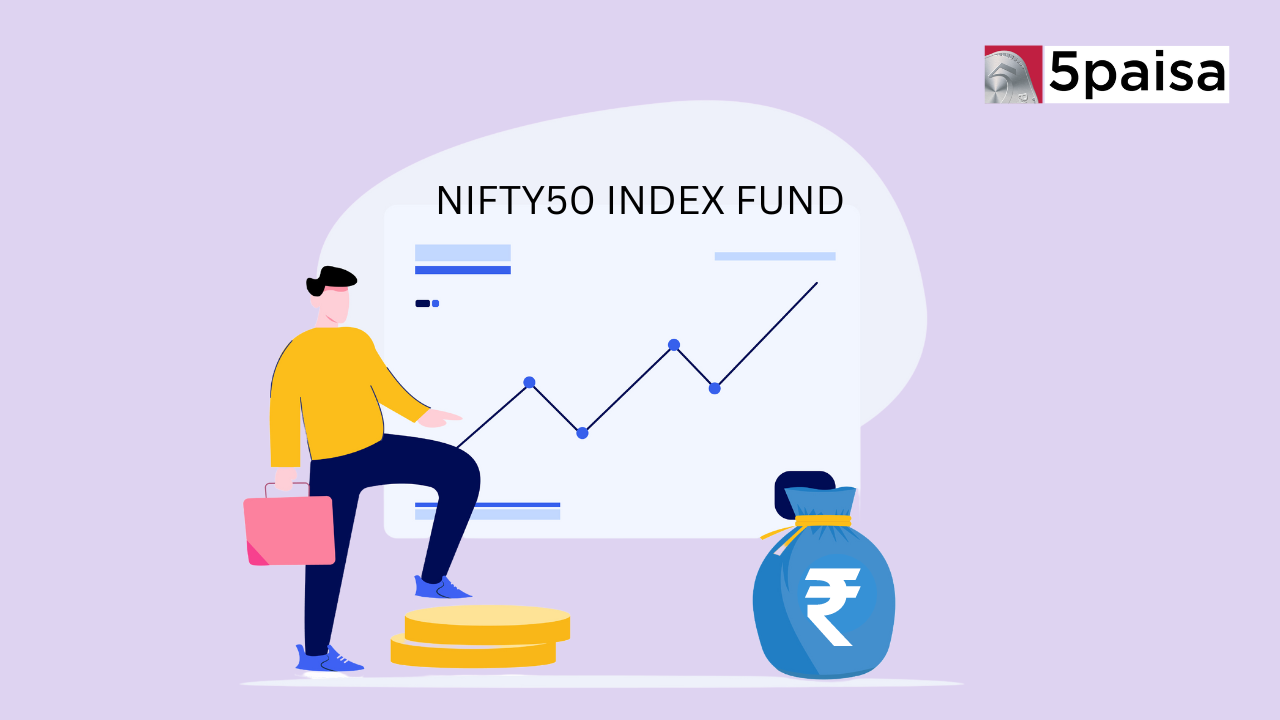iThe current values are delayed, open demat account for live values.
Nifty Smallcap 50
Nifty Smallcap 50 Performance
-
Open
8,532.70
-
High
8,555.45
-
Low
8,497.80
-
Prev Close
8,494.70
-
Dividend Yeild
0.72%
-
P/E
32.99
Nifty Smallcap 50 Chart

Color code for Stocks Performance
- 5% and above
- 5% to 2%
- 2% to 0.5%
- 0.5% to -0.5%
- -0.5% to -2%
- -2% to -5%
- -5% and below
Constituent Companies
| Company | Market Cap | Market Price | Volume | Sector |
|---|---|---|---|---|
| Aegis Logistics Ltd | ₹28117 Cr |
₹800.1
(0.81%)
|
1406630 | Trading |
| CESC Ltd | ₹22124 Cr |
₹167.03
(2.71%)
|
4463251 | Power Generation & Distribution |
| Aditya Birla Real Estate Ltd | ₹24847 Cr |
₹2222.1
(0.09%)
|
244760 | Realty |
| Great Eastern Shipping Company Ltd | ₹13446 Cr |
₹941.35
(3.15%)
|
474785 | Shipping |
| Zensar Technologies Ltd | ₹18959 Cr |
₹835.15
(1.56%)
|
1635341 | IT - Software |
Nifty Smallcap 50
The Nifty Smallcap 50 Index, launched on April 1, 2016, by NSE Indices Limited, tracks the performance of 50 high-performing small-cap stocks from the Nifty Smallcap 250 Index. These stocks are selected based on their average daily turnover and market capitalization, ensuring liquidity and relevance. Spanning 16 sectors, with Financial Services, IT, Chemicals, and Telecommunications dominating, the index provides a diversified representation of the small-cap segment in India.
It is reviewed semi-annually in January and July, with up to 10 stock replacements allowed annually. The index serves as a vital tool for benchmarking, ETFs, index funds, and other financial products, making it popular among investors seeking growth potential in small-cap companies.
What is the Nifty Smallcap 50 Index?
The NIFTY Smallcap 50 Index, launched on April 1, 2016, by NSE Indices Limited, tracks the performance of 50 small-cap stocks selected from the NIFTY Smallcap 250 based on average daily turnover and market capitalization.
Spanning 16 sectors, Financial Services, IT, Chemicals, Consumer Durables, and Telecommunications together represent nearly 70% of the index. It accounts for approximately 2% of the NSE’s float-adjusted market capitalization, with a traded value of 4.7%. The index is reconstituted semi-annually and is used for benchmarking, ETFs, index funds, and other structured products.
How is the Nifty Smallcap 50 Index Value Calculated?
The NIFTY Smallcap 50 Index value is calculated using the formula:
Index Value = Current Market Capitalisation / (Base Market Capitalisation * Base Index Value).
This formula captures changes in market capitalization over time relative to the base period.
The index undergoes a semi-annual review in January and July based on six months of data. Any changes to the index constituents, with a maximum of 10 stock replacements in a year, are implemented on the last trading days of March and September. This periodic reconstitution ensures that the index remains representative of the small-cap segment, reflecting the most relevant companies within the NIFTY Smallcap 250 universe. The process helps maintain the index's integrity as a performance tracker for small-cap stocks on the NSE.
Nifty Smallcap 50 Scrip Selection Criteria
To be included in the Nifty Smallcap 50 Index, companies must first be part of the Nifty Smallcap 250 and rank within the top 150 based on average daily full market capitalization and turnover over the past six months. From this eligible pool, 50 stocks with the highest 6-month average free-float market capitalization are selected.
A security will be included if its 6-month average free-float market capitalization ranks within the top 30 or if the non-member stock's free-float market capitalization is at least 1.5 times that of the smallest index member.
A stock will be excluded if its free-float market capitalization rank falls below 70 or if it is excluded from Nifty Smallcap 250. Additionally, if a stock’s average market capitalization or turnover over six months drops beyond rank 150, it will also be excluded.
How does Nifty Smallcap 50 work?
The Nifty Smallcap 50 Index tracks the performance of 50 small-cap stocks selected from the Nifty Smallcap 250 Index. Stocks are chosen based on their average daily turnover and market capitalization over the past six months. The index spans 16 sectors, with Financial Services, IT, Chemicals, Consumer Durables, and Telecommunications dominating the composition.
The index is reconstituted semi-annually in January and July, based on updated six-month data, with up to 10 stock replacements per year. This ensures that the index reflects the most relevant and high-performing small-cap companies. Changes, if any, are implemented on the last trading day of March and September.
The index is designed for use in benchmarking, ETFs, index funds, and other financial products, making it a crucial tool for tracking the small-cap segment of the Indian equity market.
What are the Benefits of Investing in the Nifty Smallcap 50?
Investing in the Nifty Smallcap 50 Index offers several advantages, especially for those looking to tap into the growth potential of small-cap companies in India. Small-cap firms typically have significant room for expansion, providing investors with high growth potential and the opportunity for substantial long-term returns.
The index is composed of 50 stocks spanning 16 different sectors, offering diversification and reducing sector-specific risks. This broad sectoral representation helps investors spread their exposure across the economy, which enhances stability in volatile market conditions.
Additionally, the Nifty Smallcap 50 reflects the top-performing small-cap companies selected based on their market capitalization and liquidity, ensuring the inclusion of quality stocks. Investors can also use the index to benchmark their small-cap portfolios, making it a useful tool for tracking performance.
Moreover, the index forms the basis for Exchange-Traded Funds (ETFs) and index funds, providing a low-cost and efficient way to invest in the small-cap segment. Regular reconstitution ensures that the index remains relevant by including only the most promising stocks.
What is the History of the Nifty Smallcap 50?
The Nifty Smallcap 50 Index was launched on April 1, 2016, by NSE. Its base date is April 1, 2005, with a base value of 1000. The index was introduced to track the performance of the small-cap segment, selecting 50 high-performing stocks from the Nifty Smallcap 250 Index based on market capitalization and turnover.
Since its inception, the index has become a key benchmark for the small-cap sector, representing various sectors of the economy. Over time, it has gained popularity for its potential to offer high returns and is widely used for benchmarking portfolios, launching ETFs, index funds, and other structured financial products. The index undergoes semi-annual reconstitutions to ensure it remains up to date with the best-performing small-cap companies.
Other Indices
| Indices Name | Price | Price Change (% change) |
|---|---|---|
| India VIX | 18.0175 | -0.52 (-2.82%) |
| Nifty 10 Yr Benchmark G-Sec | 2607.94 | 6.1 (0.23%) |
| Nifty 10 Yr Benchmark G-Sec (Clean Price) | 924.29 | 2.01 (0.22%) |
| Nifty 100 | 25361.1 | -75.25 (-0.3%) |
| Nifty 100 Alpha 30 Index | 17693.35 | -63.35 (-0.36%) |
FAQs
How To Invest in Nifty Smallcap 50 Stocks?
To invest in Nifty Smallcap 50 stocks, you can either buy individual stocks from the index through a Demat account or invest in ETFs and index funds that track the Nifty Smallcap 50. These funds offer a convenient, diversified, and low-cost way to gain exposure to all 50 stocks in the index.
What are Nifty Smallcap 50 stocks?
Nifty Smallcap 50 stocks are the top 50 small-cap companies selected from the Nifty Smallcap 250 Index based on their average daily turnover and market capitalization. These stocks represent a diverse range of sectors and are considered high-growth potential companies within the small-cap segment of the Indian stock market.
Can you trade shares on Nifty Smallcap 50?
Yes, you can trade shares of companies listed in the Nifty Smallcap 50 Index directly through a Demat account. You can also invest indirectly by trading ETFs or index funds that track the performance of the Nifty Smallcap 50, offering a diversified approach to the small-cap market segment.
In which year was the Nifty Smallcap 50 Index launched?
The Nifty Smallcap 50 Index was launched on April 1, 2016 by NSE to track the performance of the top 50 small-cap companies in India.
Can we buy Nifty Smallcap 50 and sell it tomorrow?
Yes, you can buy shares of companies listed in the Nifty Smallcap 50 Index and sell them the next day, following regular stock market trading rules. This is known as BTST (Buy Today, Sell Tomorrow). You can also trade ETFs based on the index using the same approach.
Latest News

- May 28, 2025
India’s financial sector is under the microscope as SEBI, the country’s top markets regulator, tightens its grip on structured financial products. With more than ₹35,000 crore worth of these complex instruments being reviewed, SEBI’s next moves could shake up the entire investment landscape, according to a recent exclusive by Moneycontrol.

- May 28, 2025
Former RBI Governor Raghuram Rajan is raising red flags about the direction of the global economy, and he’s not mincing words. In a recent interview with India Today TV, Rajan warned that financial markets are acting as if everything is fine despite significant risks looming.
Latest Blogs
The concept of the metaverse is reshaping the future of digital interaction, merging virtual reality (VR), augmented reality (AR), blockchain, and artificial intelligence to create immersive online experiences. As global tech giants continue investing heavily in this evolving space, Indian companies are also stepping up to harness this futuristic trend.
- May 28, 2025

Index funds are a smart and efficient way to invest in the stock market, especially for those who prefer a passive investment strategy. These funds replicate the performance of a specific market index—like the Nifty 50 or Sensex—offering broad market exposure, low expense ratios, and diversification across top companies.
- May 28, 2025

